Can you become a fast runner without wrecking your cycling fitness?
Freddy Ovett's attempt to run a sub-2:30 marathon prompts CW to ask just how far cyclists can push their running without jeopardising their bike fitness
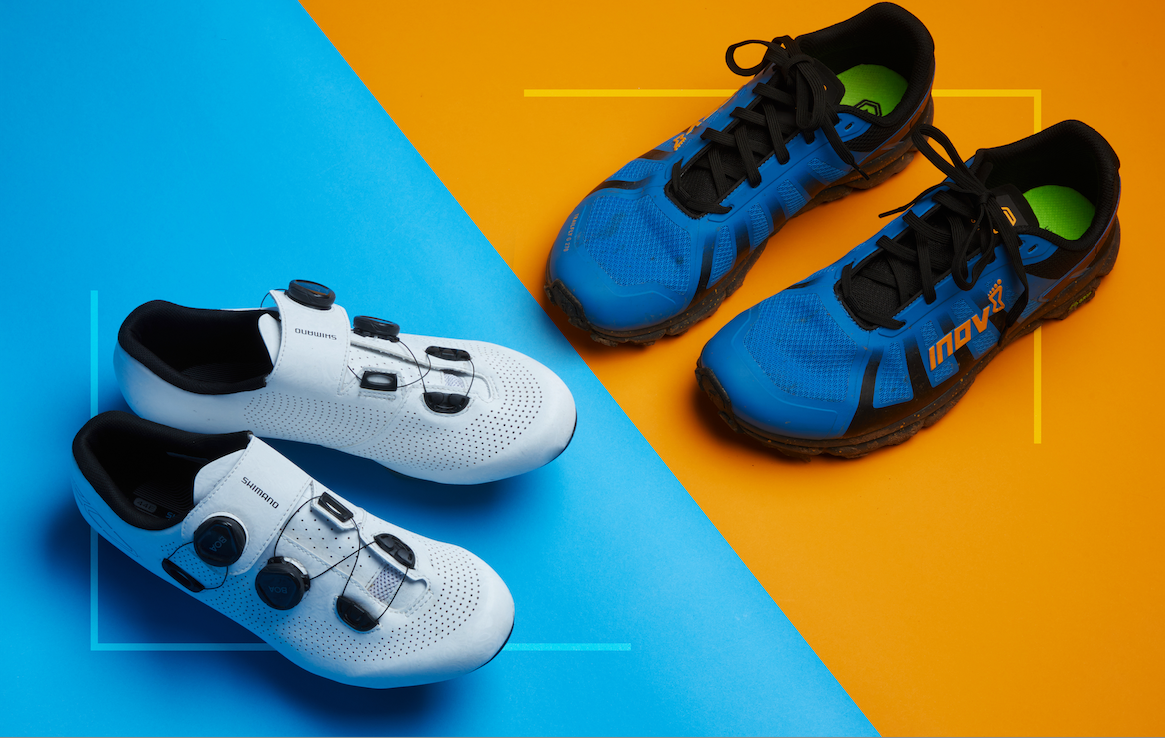

Whether it’s Tom Dumoulin running a 32.38 10km, Adam Yates clocking a sub-3hr marathon or even Tom Pidcock posting a fantastical 13.25 5k on Strava, the growing number of cyclists achieving fast running times makes you wonder if there’s an unofficial foot race going on in the pro peloton. Then again, the revelation that Primož Roglič enjoys a daily jog even during the Tour suggests it’s as much to do with ritual and enjoyment as it is performance. As a cyclist who also runs, I wanted to find out if the two disciplines are mutually beneficial. Can target-driven running also make us faster on our bikes – or at least not slow us down?
A colleague tipped me off in September that the latest example of a pro cyclist taking to running could be the most spectacular yet: Freddy Ovett was targeting sub-2:30 at the Berlin Marathon. It captured my attention for two reasons. First, I figured that with the surname Ovett, a certain level of natural talent could be taken for granted. (If you’re too young to remember the early Eighties, all you need to know is that Freddy’s dad Steve was the best middle-distance runner in the world.) Second, I knew from personal experience exactly what it took to go sub-2:30 in Berlin: I’d set my PB there exactly 10 years ago.
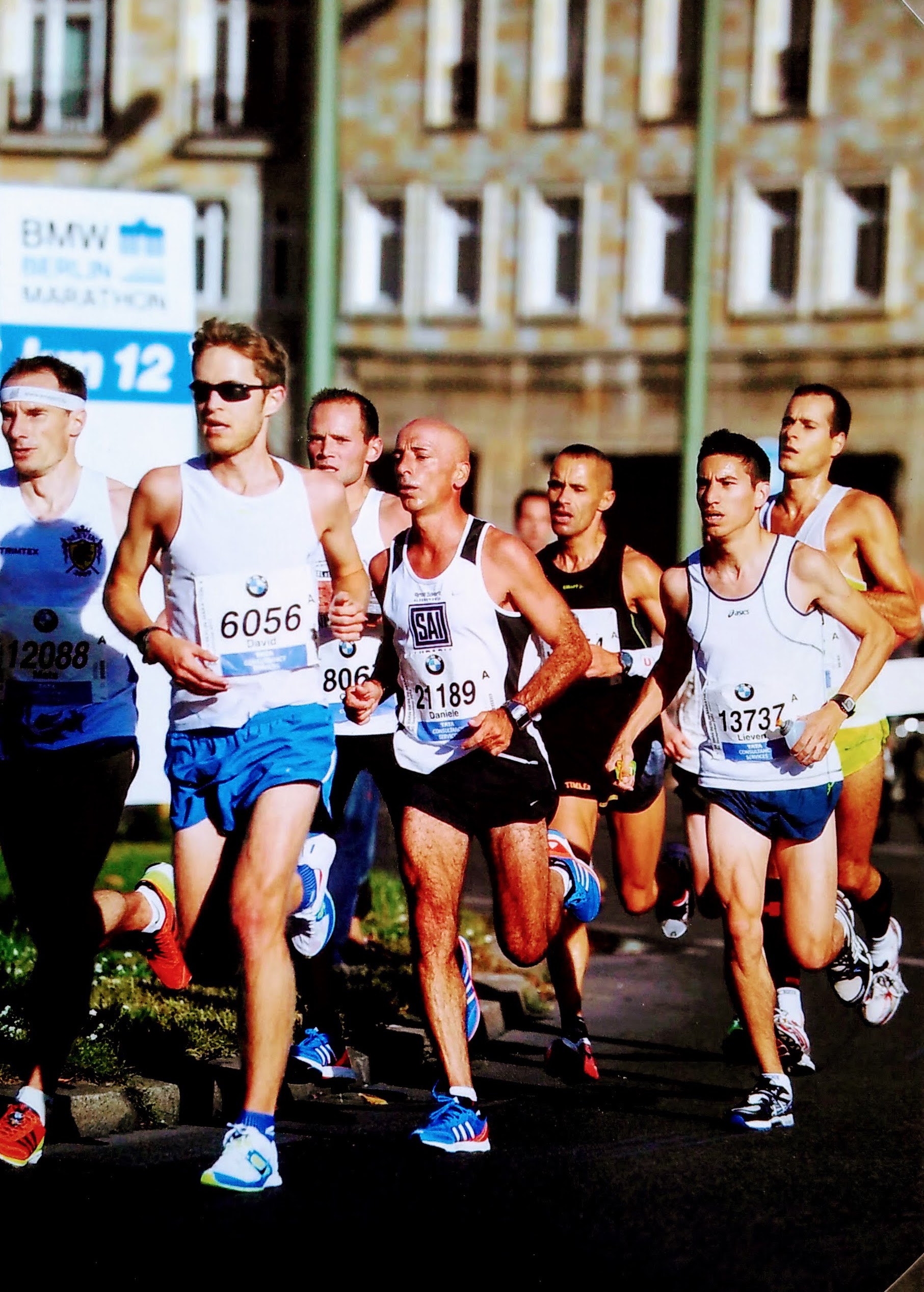
CW's David Bradford (#6056) on his way to a 2:28 PB in the 2012 Berlin Marathon
Ovett Jnr agreed to speak to me by video call from his home in Girona, Spain, a fortnight before the race. The first thing I was curious to know was how a full-time professional rider gets the OK from their paymasters to throw themselves into marathon training. “Honestly, the way teams are structured these days at the WorldTour level, it’s one of the reasons I decided it wasn’t for me,” said the 28-year-old, referring to his move from the Israel Cycling Academy (Israel Premier Tech’s feeder team) to Legion of Los Angeles at the end of 2020. “It’s too structured and they control too much of your life – they’re monitoring your TrainingPeaks and tracking your eating using food apps; you can’t do much without the team knowing about it.”
In Ovett’s view, teams should take less of a Big Brother approach and let race performance speak for itself. “I started running during lockdown, and it’s helped me on the bike a lot,” he continued. “More importantly, it’s made me happier and I’m feeling healthier. Legion trust me: they know that, in preparing for a marathon, I’m not going to forget I’m a professional cyclist.” It’s good to know Legion live up to their laid-back image, but I was still surprised to hear a pro cyclist put such a high value on running. “It works for me personally anyway,” said Ovett, cautiously. “Everyone’s different, and I really need to make that clear, as I was a runner [as a youngster] from eight years old at a high level – I’m blessed with good genetics, obviously, and that’s the reason I’m able to run without getting injured.”
This is an important caveat. It’s well known that cyclists who try running have a tendency to hurl themselves into it too hastily and quickly discover that, while their aerobic system is ready and willing, their joints and tendons are anything but. Having trained as a runner in his youth, Ovett likely retains some residual resilience. As for his natural ability, it is eyeballs-out phenomenal. Without any specific preparation, he completed last November's LA Marathon in 2:48 and then on New Year’s Eve finished third in the St Silvestre de Girona 5k in a jaw-dropping 14.41.
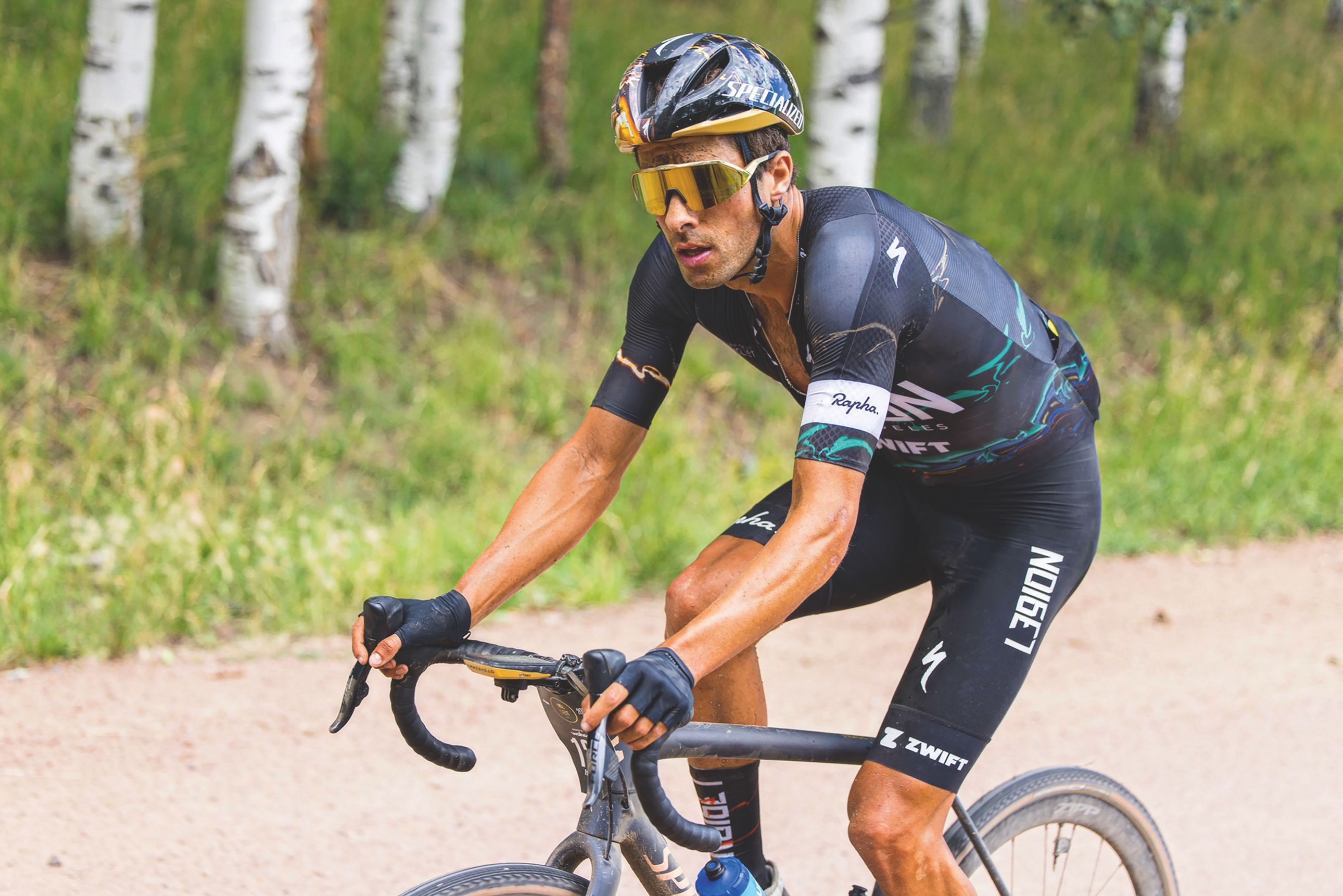
Freddy Ovett rides for US team Legion of Los Angeles
He might be naturally gifted, but how would speedy genes protect his cycling legs from the pulverising effects of marathon training? My sub-2:30 required a 14-week build-up of 70-90 miles a week including gruelling long runs with sections at target pace. How was Ovett squeezing in all this alongside his bike training, bearing in mind that just a couple of weeks earlier he’d finished second at premier US gravel race SBT GRVL? “Honestly, I don’t really like speaking about it,” he said, almost apologetically, “because I think it can come across as disrespectful to people like yourself, but on Sundays I replace a ride with a run.”
Hang on, what, one run a week? “Yeah, mileage anywhere between 10 and 20 miles a week. When you say it like that, it sounds ridiculous, but when you combine it with 20 hours minimum on the bike, it’s not that I’m not training, I’m just doing it in a very different way.” No offence taken, and he’s right that his schedule is by necessity unusual – but could Ovett really run a fast marathon off such minimal event-specific training? Moreover, wasn’t he risking his cycling fitness by attempting it?
The latest race content, interviews, features, reviews and expert buying guides, direct to your inbox!
In the hunt for a rounded view on whether cyclists can, or indeed should, include some running in their schedules, I contacted a variety of coaches and experts who work across both disciplines. My first call was to Tim Pigott, head coach at HP3 and colleague of runner turned multi-champion cyclist Emma Pooley. “With my physio hat on,” said Pigott, “I would say that all cyclists should include some impact-related activity to maintain bone health – studies show that male cyclists are seven times more likely to have osteopenia [low bone density] than male runners.” This is a stark fact, and Pigott is right to point out that running is an effective way to keep bones healthy and strong. It’s not the only way, though, as more targeted load-bearing such as hopping, jumping or heavy lifting is just as effective.
Complementary or counterproductive?
The bigger question remains: does running harm cycling performance? “No, the negative effects will be so minimal that you’re not going to notice,” said Pigott. “Your muscles may be a little sore afterwards because of the unfamiliar eccentric loading, but you’ll still be able to push just as much power on the bike.” This is not a green light to replace rides with runs willy-nilly. “You’ve got to think about what’s the best use of your time,” added Pigott. “If a run replaces a key session on the bike, that’s counter-productive, but a short run will provide as much aerobic stress as a much longer low-intensity ride.” In other words, swapping an hour’s easy spin for a 30-minute run can be a savvy choice for a time-crunched rider.
“When Emma [Pooley] was a pro cyclist, she’d do the coach’s head in because she’d go running,” said Pigott. “It was against their advice, but she’d just say, ‘I like it and it’s good for me’.” Now retired from cycling, Pooley has returned to running, and after our chat, Pigott emailed her to confirm her positive view on running for cyclists. Her reply was not, however, the unconditional seal of approval he expected. “To be honest, I stopped running during the cycling season from 2008, as it was detrimental,” Pooley wrote. “I only ran during the offseason and maybe mid-season break.” The reason that running might be detrimental to cycling performance is because it requires leg muscles and tendons to work in a completely different way. “Running involves a roughly 50/50 split of eccentric and concentric contractions, whereas pedalling force comes from concentric contractions,” explained Dr Jamie Pringle, who has worked with athletes at the top level in both disciplines. “That eccentric loading is very specific to running – forces are absorbed through mechanical structures that store energy then return it, a bit like a spring, in a stretch-shortening cycle.” His point is that the adaptations stimulated by running – e.g. elastic, energy-absorbing tendons – are redundant on the bike.
Does this mean that cyclists should think twice before adding a weekly run to their schedule? “No, I don’t think so, provided they can safely adapt to the mechanics of running and avoid injury,” said Pringle. “More fundamentally, it’s about the balance of training loads across the week – you don’t want to do so much running that you lose cycling adaptations.” In terms of how and when to schedule runs around cycling, Pringle urged caution. “The mechanical loading will be alien to you, so approach it almost like an interval session, making sure you’re fresh enough going into it – don’t run on tired legs.”
In terms of aerobic stimulus, there is no question that running packs a mighty punch. In fact, should you get so accustomed to running that you start doing interval sessions, you might find you’re able to push your cardiovascular system even harder than you can on the bike. “Someone who’s less well trained as a runner will probably find they can sustain a higher percentage of their maximum [heart rate] while running than they can while cycling,” explained Pringle. The reason is simple: running works your arms as well as your legs.
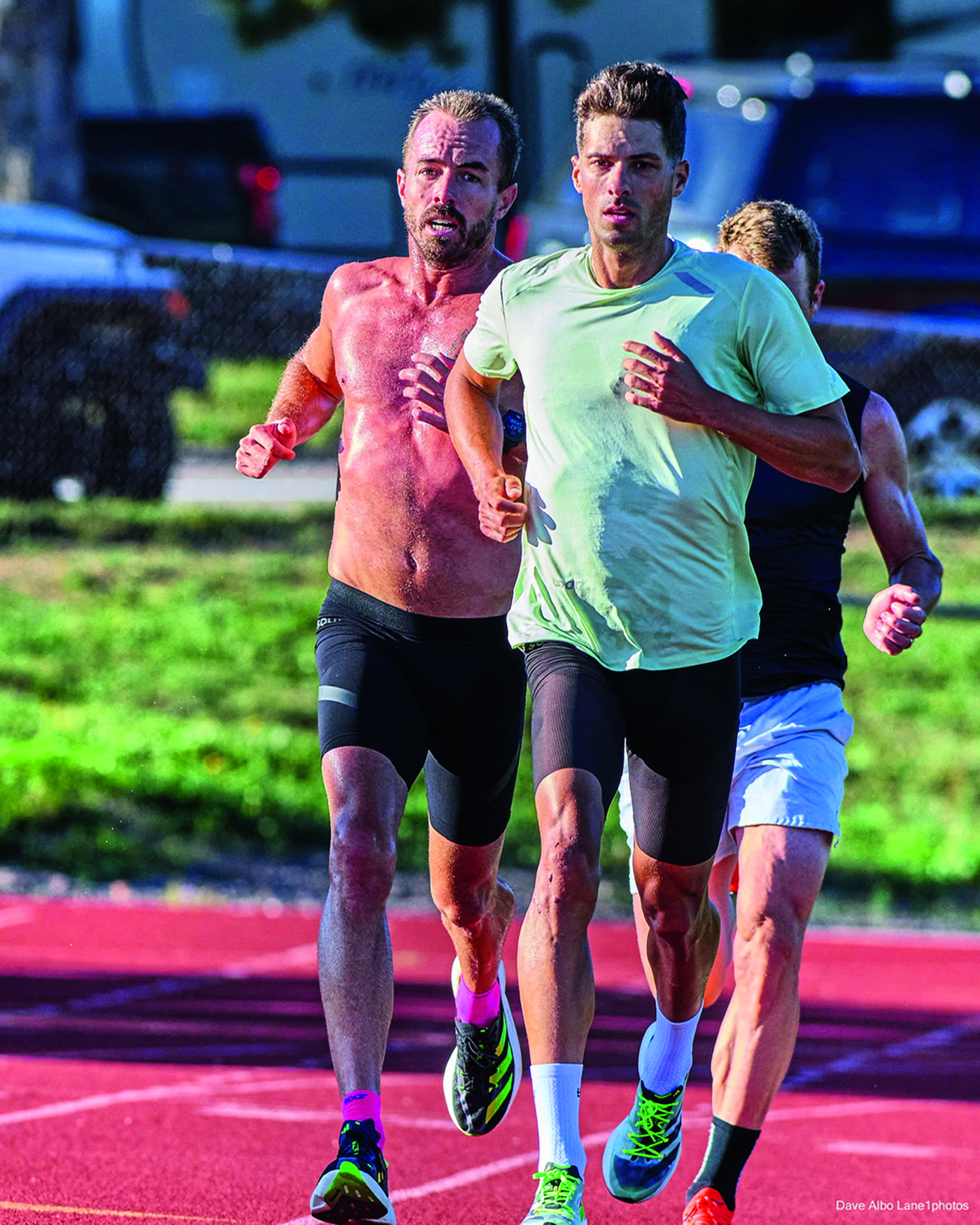
Alongside his bike training, Ovett squeezes in sessions with elite runners
At this point Pringle pitched in a curveball by pointing out that, in terms of driving aerobic gains, there is another activity that beats both cycling and running. “Cross-country skiing for cardiovascular and respiratory stimulus is as good as you’re going to get,” he said. ”There’s so much work going on, from the grip of your hand to your toes pushing off, it really is the ultimate.” Sadly the UK climate doesn’t offer many skiing opportunities, but how about simulating the activity on an elliptical machine? “Yes, a great alternative – the heart and lungs don’t mind where the demand is coming from,” said Pringle, “although bear in mind, you won’t be getting the impact for your bones.”
I wanted to speak to someone who had actually done it, recorded fast running and cycling times while combining both forms of training. Triathlon was the obvious place to look, but courses aren’t always strictly measured and it’s all about crossing the line first rather than setting record times. I discovered that the fastest Olympic triathlon time is Alistair Brownlee’s 1:46:25 from London 2012, which included a 40k ride (just under 25 miles) in 59:08 and a 10k run in 29:08. OK, that’s a very fast run, but the bike time seemed underwhelming – even CW’s editor is faster over 40km!
Finally I found what I was looking for: a UK amateur who had ridden sub-50 minutes for 25 miles and run a sub-2:30 marathon, both within the past 18 months. What made Paul Lunn’s achievements even more impressive was that he had just turned 50. So I phoned him and asked him to confirm what his PBs implied – running complements cycling performance, right? “I think it’s the other way around,” he said, bluntly. “Runners benefit quite a lot from cycling but I’m really not sure cyclists benefit from running.” This was not what I’d been hoping for.
Didn’t his 2:29.50 at the Seville marathon in February, following a 2021 season of fast bike times including a 49.38 25-mile TT, prove that the two disciplines are mutually beneficial? “This year was different for me,” he explained, “as I did a big running block at the beginning of the year. It badly affected my cycling in terms of top-end power – I lost about 40 watts in two months.” The drop in bike performance didn’t concern him, as he was confident of recouping it. “After the marathon, I did two weeks in Majorca and pretty much got all that power back.” It was getting difficult to avoid the conclusion that, however beneficial for bone health or as an occasional time-saving cardio blast, running in larger doses was harmful to cycling performance. What did this mean for the high-reaching running ambitions of pro cyclist Freddy Ovett?
Hero just for one day?
On the morning of the Berlin marathon, I followed Ovett’s progress on the race’s live tracker as he triggered timing mats every 5km. His first split was a scorching 17.09 – well inside 2:30 pace – and he slowed only slightly over the next 10km (17.21 and 17.39). I hoped for his sake that he was settling into a sustainable rhythm, but the next split revealed the metaphorical wheels were falling off. By the halfway mark, he had slowed to 18.30 per 5km and the dream was slipping away. As every marathon runner knows, when the legs say no beyond 25km, the negotiation is closed. Ovett valiantly kept running through the pain and crossed the line in 2:45.29 – a very respectable time but missing his target by over 15 minutes.
“My early pace was too quick,” admitted Ovett when we caught up by video call four days after the race. “It’s a bit of a shame, as I got carried away, running by feel at what felt like the right pace – until suddenly at halfway it wasn’t anymore!” I put it to Ovett that his lack of marathon-specific training caught up with him. “I did a 40km in Boulder a month earlier on dirt roads at altitude only slightly slower than my Berlin pace,” he defended his preparation, “so I think it was less the lack of conditioning, more the lack of respect for the distance.”
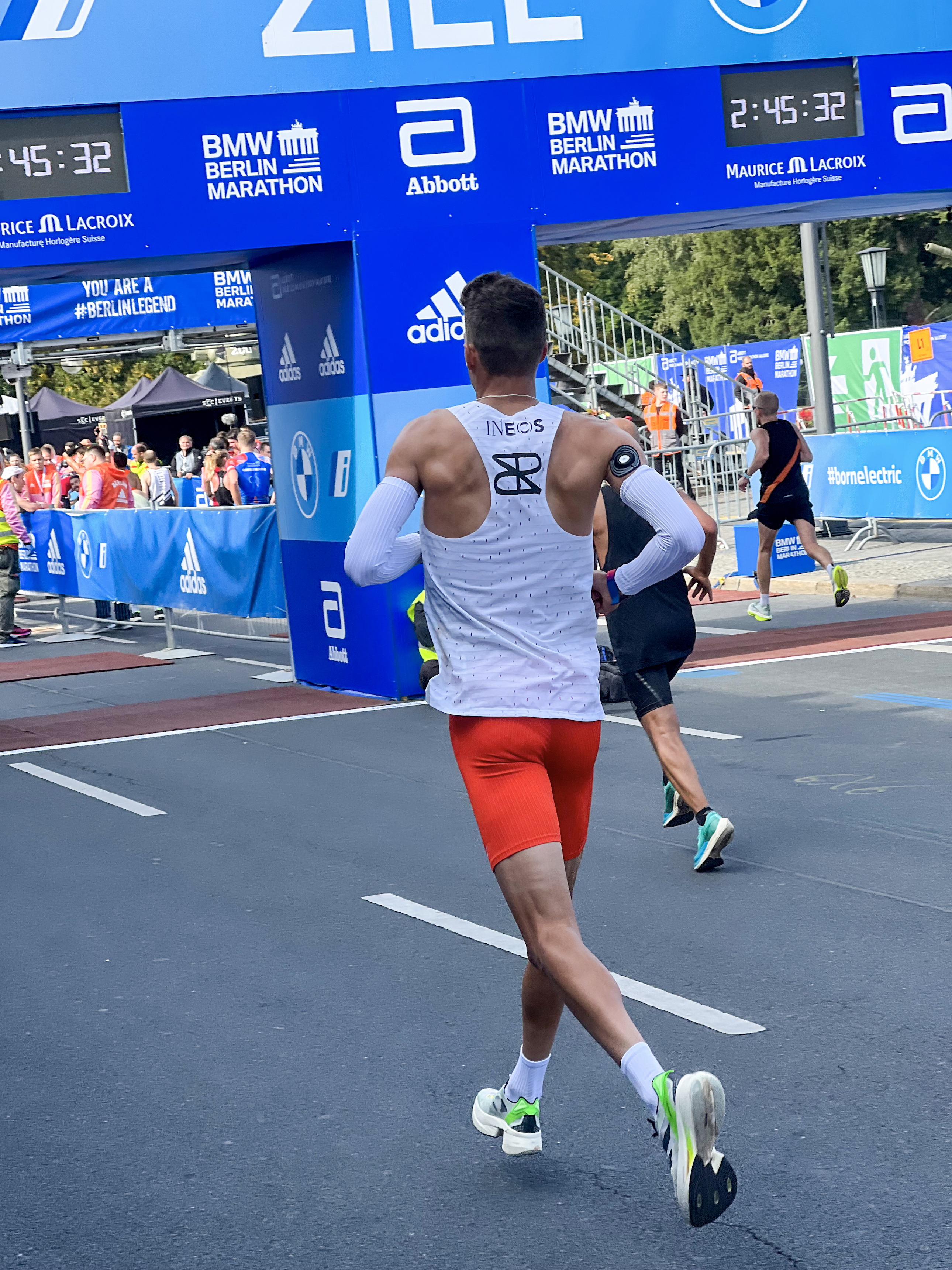
Freddy Ovett nears the finish line in the 2022 Berlin Marathon
What about the effect on his cycling – how had it been returning to his professional obligations? “The recovery has been great actually, considering how bad my legs felt the day after the marathon. It was purely just soreness,” he said with palpable relief. I sensed from Ovett that this wasn’t over; that running remained unfinished business. “The [cycling] season is more or less over for me,” he pondered the weeks ahead, “so there’s some time before off-season, when I’ll take a month off exercise completely.” Was he really going to attempt it again? “If I do, I’ll take a safe approach; maybe I’d try to run under 2:40, do it while feeling good – then get back to my real job. That way, I wouldn’t do much damage.”
I heard nothing more of Ovett’s running plans until three weeks later when an unexpected tweet from Athletics Weekly popped up on my timeline: “Pro cyclist Freddy Ovett, the son of supermiler Steve, clocks 71.44 in today’s Valencia Half Marathon.” I flicked to Ovett’s Strava feed and there he was standing at the finish line, beaming smile and bedecked in the bright white vest of Brighton Phoenix – the athletics club co-founded by his dad. In the description line, just six simple words: “Warm one. Valencia is a vibe.” His chip time of 71.41 equated to an average pace of 5.27 per mile – surely the best run ever recorded by a full-time pro cyclist. But was it on a par with his original sub-2:30 target? To find out, I punched 71.41 into a trusted online calculator to find out what it predicted for a marathon: click, click, kaboom: 2:29.57. Back to the day job, Mr Ovett, your work here is done.
Our thanks to glucose monitor brand Supersapiens for facilitating Cycling Weekly’s interviews with Freddy Ovett, who is a Supersapiens ambassador.
Michael Hutchinson: 'Running broke me good and proper'
Former national TT champion and CW columnist Michael Hutchinson set himself an ambitious marathon target in 2018. It didn’t end well…
“I ran a marathon when I was 20 (2:59.58, thanks for asking), before I took up cycling. I didn’t go back to running until 2009, when I decided to take a break from the bike for a couple of months post-season. “The aerobic ability from cycling transferred very well to running – it only ever took a couple of weeks to get my running threshold pace to about 6.40/mile. On the other hand, running certainly made me slower on a bike. Aerobic capacity went down, any ‘jump’ I ever had vanished, and my pedal stroke (measured on a Wattbike) got less efficient.
“In late 2014, I started running more seriously, and ran another two marathons. Then during a third marathon in 2018 I sustained a severe stress fracture to my hip, necessitating emergency surgery and a lot of titanium in a place you can’t show it off to your mates. “The injury presented with all the signs of having been caused by ramping up the volume too fast as I prepared for an assault on another three-hour marathon. My bone density was normal, so I don’t know if my cycling background was a causal factor. “I still run, a bit, but it’s left me much more cautious. Running is very different from cycling, and the same approaches don’t always transfer well. You need to increase training load carefully, and treat injuries with more respect.”
Running + cycling = extra gains?
A legendary 1977 study saw eight subjects put through a brutal 10-week programme of intense running and cycling six days per week. On three days, they performed a bike session of six five-minute VO2max intervals, and on the other three days, they ran as far as they could in 40 minutes. In other words, they had to train flat-out almost every day for 10 weeks straight.
The reason this study has acquired legendary status is not just for its sadism, but because participants made some of the biggest VO2max gains ever recorded: a stunning average increase of 44% or 16.8ml/kg/min. While writing this feature, it occurred to me that this study poses a novel question: does the combination of intense running and intense cycling have a turbo-charged, double-whammy training effect? So I put it to Professor Louis Passfield,* and he replied as follows:
“It’s a good question. Pro cyclists’ fitness is likely to be so specific that adding in running probably won’t help. But for less experienced exercisers, yes, the benefit may be the chance to push hard for more days because slightly different muscles are involved in each form of training, allowing them to keep training relatively hard six days a week. “Triathletes mix up their training disciplines, and the very best don’t manage quite the same level of performance as dedicated cyclists or runners manage to achieve, so at the highest levels there doesn’t appear to be a performance gain from combining different types of exercise. Rather the reverse is true: it’s a distraction that hampers optimal performance in either discipline.
“In non-elites, the same is probably true but the distraction of different disciplines is likely to have less of an impact, as they’re not training as hard. And at a low level of performance, training in two disciplines may mean doing more training overall, improving fitness more quickly than would be achieved from doing only one – as was the case in the study.”
*In memory of Professor Louis Passfield, who died last month aged 55. The above contribution, provided only three weeks before his death, is typical of the invaluable and generous expert advice Passfield gave to Cycling Weekly fitness writers and editors on countless occasions. Our sincere condolences to his friends, family and colleagues in the sports science community.
This full version of this article was published in the 8 December 2022 print edition of Cycling Weekly. Subscribe online and get the magazine delivered direct to your door every week.
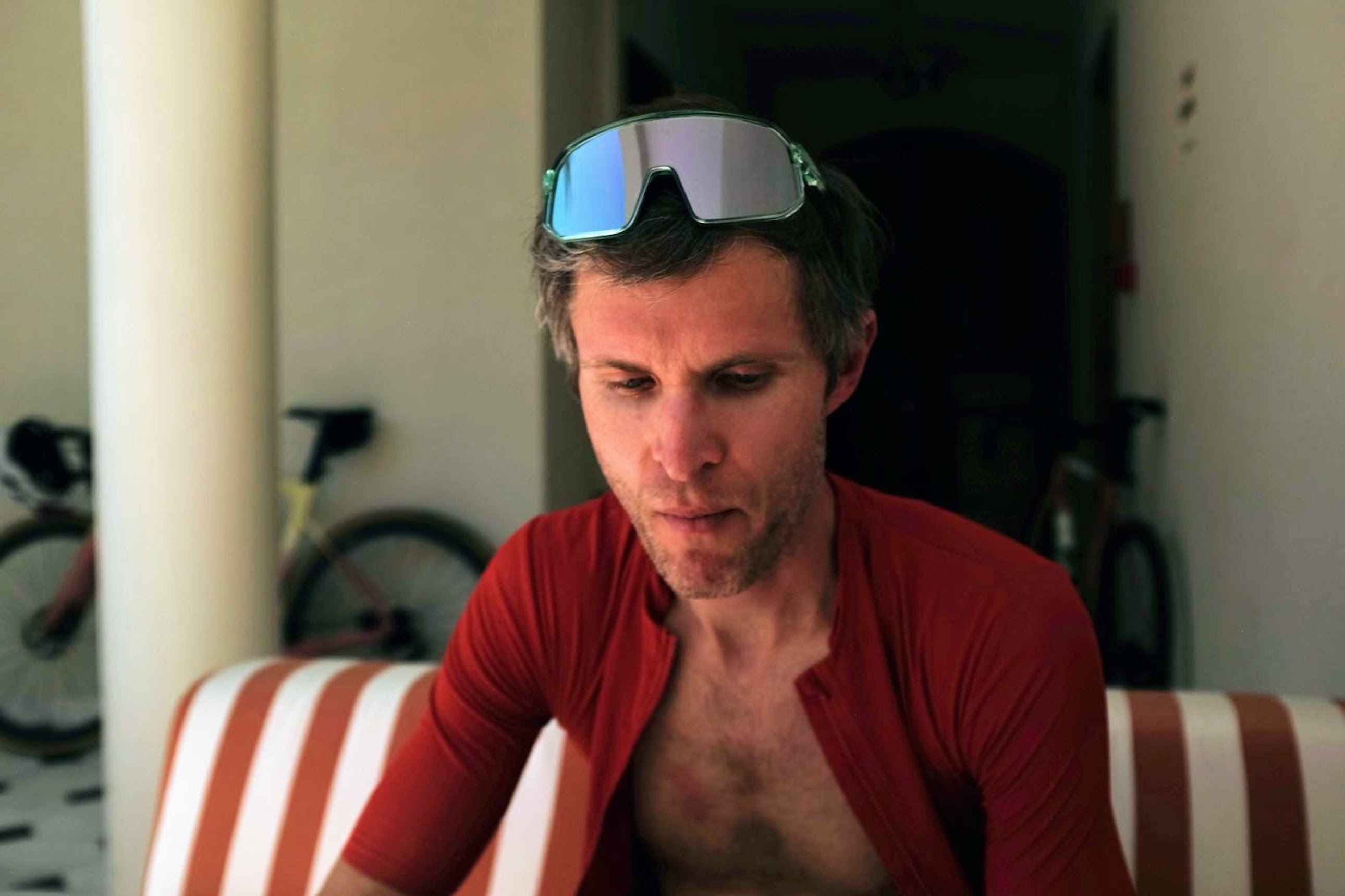
David Bradford is senior editor of Cycling Weekly's print edition, and has been writing and editing professionally for 20 years. His work has appeared in national newspapers and magazines including the Independent, the Guardian, the Times, the Irish Times, Vice.com and Runner’s World. Alongside his love of cycling, David is a long-distance runner with a marathon personal best of 2hr 28min. Diagnosed with retinitis pigmentosa (RP) in 2006, he also writes personal essays exploring sight loss, place, nature and social history. His essay 'Undertow' was published in the anthology Going to Ground (Little Toller, 2024). Follow on Bluesky: dbfreelance.co.uk